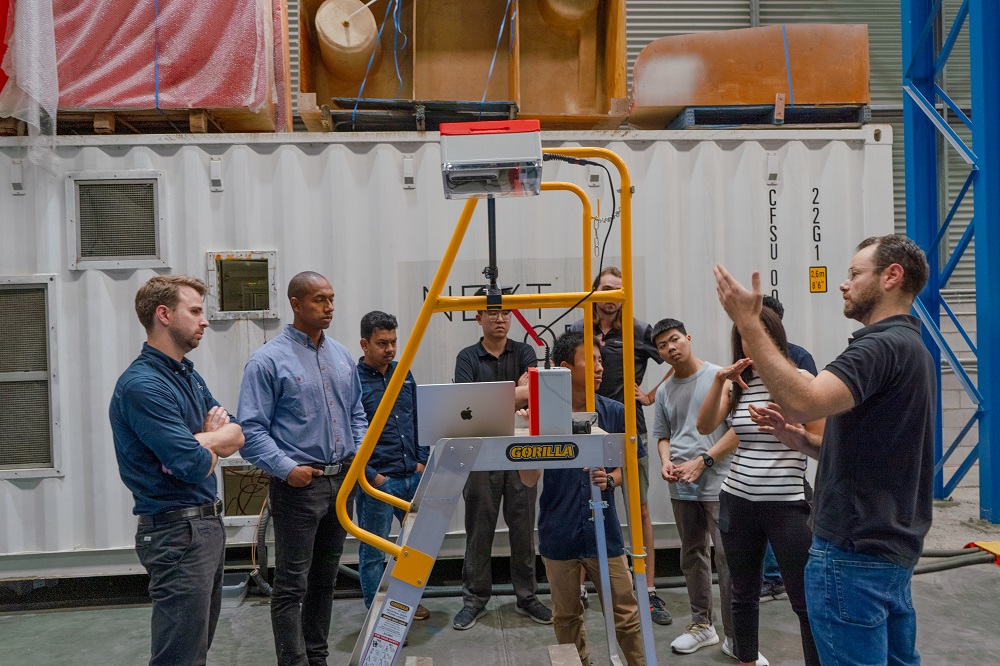A partnership between Australian mining tech innovator NextOre and the University of Technology Sydney’s (UTS) Robotics Institute is redefining what the future of mining looks like by turning magnetic resonance imaging (MRI) technology, robotics and automation into tools for sustainability, efficiency and talent development in the resources sector, NextOre says.
Originally developed by the CSIRO more than a decade ago, NextOre’s magnetic resonance (MR) analyser uses similar MR technology as that used in hospital MRI scanners to rapidly measure and sort minerals of value from waste with surgical precision. The tech is already operational on mine sites around the world, helping reduce fuel, water and chemical use while slashing waste and tailings.
When it came time to adapt the technology to suit large mining trucks, NextOre turned to the Robotics Institute at UTS for support.
“We knew from the start that scaling this technology would take more than just smart hardware,” NextOre Chief Operating Officer, Shivika Singh, said. “That’s where UTS came in. Their robotics capabilities helped us bring this system to life and their students are now part of our innovation engine.”
The collaboration is now bringing a new wave of automation, machine learning and robotics into the mining sector and, in doing so, it’s also reshaping the mining workforce and offering new pathways for graduates into the industry, NextOre says.
The mining sector is increasingly looking to graduates with skills in robotics, automation, software and AI to improve the productivity and safety of its operations.
Through their partnership with UTS, NextOre is tackling real-world, high-impact projects that are helping students transition seamlessly from classrooms to cutting-edge mine sites.
“We’re not just building new tech, we’re building the next generation of mining professionals,” Singh said. “This is where a student with a robotics major can walk straight into a mining company and help shape its future.”
From developing a 7-m MR ore scanner to building a light-weight, industrial 3D vision platform, UTS students are gaining hands-on experience in solving complex industrial challenges. In turn, NextOre gains access to a pipeline of tech-savvy talent ready to work at the intersection of sustainability and innovation.
“When I started my robotics degree, I never imagined I’d end up in mining but through the university’s collaboration with NextOre, I got to jump from coursework theory to actual application, where I saw how robotics, AI and control automation from simulation and lab comes to real life,” Hung Thai, a UTS Robotics Institute graduate now working as a Mechatronics Engineer at NextOre, says.
“The experience completely transformed my perspective on engineering, and now I’m proud to be part of a team developing technologies that make mining cleaner, smarter and more efficient.”
For fellow NextOre colleague Kenny Tafianoto, also a graduate of the UTS Robotics Institute, the path into mining was equally unexpected.
“My journey into automation began with an industry capstone project at UTS,” he said. “I was intrigued to learn that the mining sector was embracing robotic automation, and through the project – supported by both UTS and NextOre – I gained exposure to both robotics and mining technologies. At the time, I never imagined that just a year later, I’d be flying out to service a machine on an active mine site. Working at NextOre has not only deepened my understanding of automation but also accelerated my growth as an engineer.”
UTS researchers are contributing expertise in materials science, robotic vision, data analytics and software engineering to advance the performance of NextOre’s systems. Their involvement is not only driving faster product development but also helping create smarter, more agile solutions to one of the world’s most resource-intensive industries, NextOre claims.
“This is a true example of academia meeting industry in a way that benefits both sides,” Associate Professor, Gavin Paul, from UTS, said.
“Our students get real-world experience on projects with real impact. And companies like NextOre gain new ideas and fresh talent who can think beyond traditional mining.”
As the global mining industry faces mounting pressure to lower its environmental footprint, solutions like NextOre’s are setting a new standard for what’s possible.
Chris Beal, CEO of NextOre, said: “We’re proud to be driving meaningful change in the industry. With UTS, we’re not only improving the efficiency of mineral processing – we’re demonstrating that mining can be part of a sustainable future.”
The post NextOre and UTS Robotics Institute cement mining tech partnership appeared first on International Mining.

